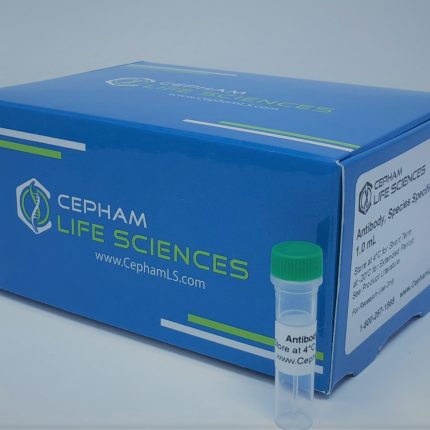Aliases
ataxia telangiectasia and Rad3-related protein; EC 2.7.11.1; FRAP-related protein; FRP1; kinase ATR; protein kinase ATR
Antibody Type
Polyclonal Antibody
Uniprot ID
Swiss-Prot#:Q13535;
NCBI Gene#:545
Immunogen
Peptide sequence around phosphorylation site of serine 428 (G-I-S(p)-P-K) derived from Human ATR.
Raised In
Rabbit
Species Reactivity
Human
Tested Applications
IHC Recommended dilution: Immunohistochemistry: 1:50~1:100
Background / Function
Serine/threonine protein kinase which activates checkpoint signaling upon genotoxic stresses such as ionizing radiation (IR), ultraviolet light (UV), or DNA replication stalling, thereby acting as a DNA damage sensor. Recognizes the substrate consensus sequence [ST]-Q. Phosphorylates BRCA1, CHEK1, MCM2, RAD17, RPA2, SMC1 and p53/TP53, which collectively inhibit DNA replication and mitosis and promote DNA repair, recombination and apoptosis. Phosphorylates ‘Ser-139’ of histone variant H2AX/H2AFX at sites of DNA damage, thereby regulating DNA damage response mechanism. Required for FANCD2 ubiquitination. Critical for maintenance of fragile site stability and efficient regulation of centrosome duplication.
Conjugate
Unconjugated
Storage Buffer
Rabbit IgG in phosphate buffered saline (without Mg2+ and Ca2+), pH 7.4, 150mM NaCl, 0.02% sodium azide and 50% glycerol.
Form
liquid
Storage
Shipped at 4°C. Upon delivery aliquot and store at -20°C or -80°C. Avoid repeated freeze.
Purity
Antibodies were produced by immunizing rabbits with synthetic phosphopeptide and KLH conjugates. Antibodies were purified by affinity-chromatography using epitope-specific phosphopeptide. Non-phospho specific antibodies were removed by chromatogramphy using non-phosphopeptide.
Modification
Phospho-Ser428







